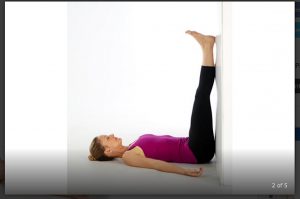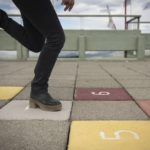The Problem: Stress and Burnout
During May, I realized I needed to get away from the sensory overload due to my excessive time on social media, television, and even the radio in my car. Although we were in a lockdown that minimized social connections, or perhaps because of it, I was spending many hours online. During the day, I posted online, read posts from friends and colleagues and commented on them, scanned the news, and hunted for inspiring webinars. In the evening, I popped into Zoom meetings and discussions that had replaced my regular evening routines. My body was literally vibrating because my nervous system was always on high alert.
When I feel stressed, I have learned to go inside, not outside. Reconnecting with myself is a way of healing. Going inside myself is how I reboot. I reset my nervous system and my thinking. When I’m in the right relationship with myself, then I can be there authentically and lovingly for others.
I decided I would go on a retreat at home and use a format similar to the many silent meditation retreats I’ve attended over the past 10 years. On May 11, I posted on my Facebook business page that I would be “retreating” for several days. However, a week turned into a month. And I felt amazingly present, awake, and happier.
Most people can’t take a month or even a week, even when the time off would significantly improve their physical health, mental state, and emotional well-being. What’s true, however, is that even a 20-minute “time-out” several times a week will rock your world.
The Solution: Have a Mini-Retreat at Home
Over the years, I’ve used simple at-home mini-retreats that take from 5 to 20 minutes. Creating a mini-retreat retreat at home is not complicated. Most of the supplies you need are everyday objects. But the benefits to your mental and physical health are extraordinary:
- Calm your adrenals and reboot your nervous system.
- Clear your mind.
- Allow room for inspiration and new ideas to surface effortlessly.
- Feel better and then act better – be kinder to yourself and others.
- Reconnect with your intuition and inner knowing, and be able to trust that inner guidance.
Mini-Retreat Number 1: Legs Up the Wall aka Inverted Leg Pose
Legs Up the Wall is a yoga pose. It’s my all-time favorite way to calm down and refresh my mind and body when I’m overwhelmed.
The Benefits of Legs Up the Wall
When you sit or stand for a long time without a break, the blood gathers in your feet. When blood is not circulating through your system, you feel depleted, exhausted, confused, or irritable. Legs Up the Wall sends blood to your feet as well as your core.
When you relax into this position, your body will naturally let go of stress. Resting on your back on the floor with your feet on the wall:
- Calms your nerves.
- Gives your heart a rest because it doesn’t have to pump so hard.
- Allows your breath returns to its natural state.
- Relieves lower back tension.
- Reduces swelling in your ankles.
- Helps with digestion.
How to do Legs Up the Wall
Gather your supplies.
- Find something comfortable to lie on. I use a yoga mat. You can lie on a carpet or rug, a towel, or a blanket.
- You also need a wall that’s clear of shelves and furniture. My current home has very little unobstructed wall space. I do have about two and a half feet of wall that I use for this time-out mini-retreat resting pose.
- A timer: using a timer is optional. You can stay in this pose until you feel totally rested and restored. Or you can set a timer for 5 to 20 minutes.
Get your legs up on the wall. I laid the following steps out in detail because I want to demystify how to get your legs up the wall without contorting your body. It will take fewer seconds to do these steps than it takes to read them.
- Make sure your mat or blanket is on the floor before you get into the position.
- Get down on the floor. Press one hip or buttock against the wall, so your body is parallel with the wall.
- Lean back slightly, bend your knees a little and swing your feet up to the wall.
- Lie back and straighten your legs and body.
- Next, scrunch your buttocks close to the edge of the wall.
- Shift your body around gently and comfortably. Relax your head and shoulders so they are resting on the mat, blanket, or floor.
- What about your arms? You can stretch your arms over your head if that feels restful. Or, leave your arms at your side and let the floor support them. I often place my hands over my belly because that feels soothing and calming.
- You can rest your head on a pillow if you want. Remember to put the pillow on the floor before getting into the pose.
Some people can easily position their legs perpendicular to the floor. Occasionally, I just can’t get my butt that close to the wall. It’s okay. This time-out is for relaxing, not about perfecting a yoga pose.
At times, you won’t have a wall available, especially if you are in an office or a hotel room. Or some of you might not be flexible enough to get your legs in this position. No worries! Instead of putting your feet up on the wall, you can use a chair or bed where you can rest your knees, legs, and feet. Make sure that the chair or bed is not too high. Your legs and feet will be above your head, and you will get the same benefits.
If you have 15 minutes available, get your legs up on the wall right now. Breathe and relax. Feel your body being supported by the floor. Know that at this moment, all is well.
Share your experiences with this mini-retreat in the Comments section on this page below the blog post or post it on my Facebook page. You’re invited to share a favorite mini-retreat as well.
Stay tuned for a new 20-minute retreat coming next week.









Trackbacks/Pingbacks